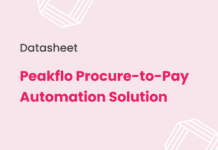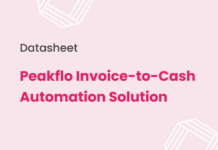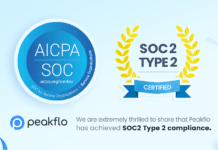In the complex landscape of accounts payable management, the persistent challenge of resolving invoice dispute looms large for accounts payable teams. Invoice disputes are not merely administrative headaches; they have tangible financial repercussions and can erode the trust between you and your vendors.
| According to CFO.com, invalid or incorrect purchase order information leads to 49% of disputes. |
For the accounts payable team, processing and paying invoices are part of the daily grind. Typically, after reviewing the invoice, conducting a three-way match, and seeking approval, the invoice smoothly progresses toward the payment phase. But what if something goes wrong?
Small issues are often fixable with a quick phone call or email. Yet, for bigger problems, you might need to dispute the invoice. This guide is here to walk you through those moments when the usual process hits a bump. We’ll talk about the common challenges faced by accounts payable teams and give you a clear plan for resolving disputed invoices.
Understanding Invoice Dispute
A disputed invoice refers to a situation where there is a disagreement or discrepancy between the buyer and the vendor regarding the details or terms outlined in the invoice. It can involve various issues, such as incorrect quantities, pricing errors, delivery problems, or quality concerns.
When an invoice is disputed, the accounts payable team is questioning certain aspects of the invoice, and there is a need to resolve these issues before the payment can be made. Disputed invoices can lead to delays in payment, strain relationships between buyers and vendors, and potentially impact the cash flow of both parties.
Common Reasons for Invoice Disputes
Several factors can contribute to disputes in invoices. Understanding these causes is crucial for effectively addressing and preventing disputes in the accounts payable process. Here are common causes of invoice disputes:
Incorrect Information: Errors in the invoice details, such as incorrect item quantities, prices, or descriptions, can lead to disputes. These inaccuracies often result from human error during data entry or miscommunication between departments.
Late Deliveries or Services: If goods or services are not delivered on time or do not meet the agreed-upon schedule, it can trigger disputes.
Quality Issues: Discrepancies in the quality of goods or services provided compared to what was expected can result in disputes.
Billing Discrepancies: Differences between the agreed-upon terms and the invoiced amounts can lead to disputes. This may include incorrect calculations, unauthorized charges, or discrepancies in discount or payment terms.
Communication Breakdown: Poor communication between the buyer and seller can contribute to misunderstandings, leading to disputes. Lack of clarity regarding expectations, changes in orders, or payment terms can create friction in the invoicing process.
Purchase Order Discrepancies: Discrepancies between the issued purchase order and the corresponding invoice can result in disputes due to differences in quantities, pricing, or delivery terms.
Unapproved Charges: Invoices that include unauthorized or unexpected charges may lead to disputes. Accounts payable teams must be aware of all the charges and ensure they align with the agreed-upon terms.
Documentation Issues: Incomplete or missing supporting documents, such as delivery receipts or contracts, can contribute to disputes.
Types of Invoice Disputes
Various types of invoice disputes demand distinct approaches for resolution. For instance, if there’s a disagreement due to unclear writing or a pricing mistake, it’s advisable to reach out to the sales team. On the other hand, disputes involving technical aspects are best addressed by contacting the technician, sales manager, or service provider.
Let’s break down the types of invoice disputes:
- Administrative Disputes. Typically involve errors in administrative details such as names, addresses, or contact information.
- Duplicate Invoice Disputes. These occur when identical invoices are issued for the same goods or services.
- Price Disputes. Encompass issues related to pricing, and may also include disputes over payment amounts.
- Partial Dispute Amount. Involves disagreements over a portion of the total invoiced amount.
- Credit Not Processed. Concerns disputes where a credit owed to the buyer has not been properly processed.
- Missing Goods Invoice Dispute. It occurs when the goods listed on the invoice are not received.
Sample Invoice Dispute Letter
| December 15, 2023 Ms. Lisa Miller – Finance Manager XYZ Electronics50 Tech Blvd.Tech City, USA 11111 RE: Account Number: YYYYY123 Hello Ms. Miller, I hope this letter finds you well. I wanted to bring to your attention some discrepancies in Invoice #562489, dated December 10, 2023. The invoice from XYZ Electronics indicates a charge of $8,000 for 20 computer monitors, but our records show that only 15 monitors were delivered, with no mention of any pending items. Enclosed, you will find a copy of the initial purchase order, along with the invoice and receipt note for your review. I kindly request the issuance of a revised invoice for the delivered 15 monitors, totaling $6,000. Rest assured, once the corrected invoice is received, we will promptly process the payment. Should you have any inquiries, please feel free to reach me at xxx-xxx-xxxx or via email at John@TechSolutions.com. Sincerely, John Davis Accounts Payable Supervisor Tech Solutions Inc. |
Why Accounts Payable Teams Should Proactively Resolve Invoice Dispute?
Unresolved invoice disputes affect businesses, particularly in terms of cash flow and vendor relationships. From the perspective of the accounts payable team, paying an inaccurate invoice, be it due to pricing glitches or service quality discrepancies, undermines sound business practices.
The repercussions extend to cash flow, with delayed payments disrupting financial stability. This, in turn, hampers the organization’s ability to meet financial commitments promptly. Equally critical is the strain on supplier relationships, which may lead to disruptions in the supply chain.
To counter these challenges, implementing a vendor invoice management strategy and a structured step-by-step process for invoice dispute resolution is important.
Step-by-Step Plan for Resolving Disputed Invoices
Step 1: Thorough Invoice Review
After receiving the vendor invoice, ensure every detail is carefully examined for potential discrepancies. Identification of issues upfront expedites the resolution process and maintains credibility.
It could be a time-intensive process, but with solutions embedded with OCR and 3-way matching technology, the process becomes easier and faster.
Step 2: Timely Contact Vendors
Establish a deadline, say 10 days after receiving an invoice, for contacting the vendor about potential issues. Whether handling invoices manually or through automation, prompt communication ensures timely issue resolution.
Step 3: Record Invoice Dispute
After initiating contact regarding a potential dispute through phone or email, it is crucial to follow up with supporting information that substantiates the dispute. This dual approach ensures comprehensive communication and provides clear evidence to substantiate the concerns raised during the initial contact.
Step 4: Provide Adequate Proof to Vendors
Addressing a straightforward issue over the phone is different from dealing with a major dispute. In such cases, it’s beneficial to compile a list of essential documents to include when communicating issues to vendors and suppliers. The list may contain:
- Explanation Letter or Email
- Copy of the Received Invoice
- Copy of the Receipt Note
- Copy of the Purchase Order
- Other Relevant Documentation
Step 5: Implement Dispute Resolution Policies
Develop a clear process for handling invoice disputes:
- Act quickly to identify any exceptions to show a willingness to collaborate with vendors for a swift resolution.
- Keep all stakeholders informed about the issue and ensure that everyone receives necessary notifications timely.
- Be proactive in paying vendors what they’re owed to gain the advantage of discounts in the future.
- Whether your vendor opts for a new invoice or a credit memo to resolve a disputed balance, prioritize timely payment for undisputed amounts.
- Investigate internal errors, considering potential consequences like penalties or interest.
- Consider adopting accounts payable automation to reduce or eliminate future invoice disputes.
Closing Thoughts
Invoice dispute resolution demands a strategic approach, and embracing technology can be a game-changer for accounts payable teams.
Peakflo Accounts Payable solution not only streamlines the process of identifying and resolving invoice disputes but also offers a seamless platform for communication with customers. It allows businesses to ensure a systematic and efficient resolution process, avoiding the pitfalls of delayed dispute management.
The platform facilitates transparent communication, maintaining a clear audit trail of interactions. This not only enhances collaboration but also provides a comprehensive record for future reference. Furthermore, it minimizes the risk of human errors in invoice processing and purchase order generation. The accuracy and reliability of important documents are significantly improved, reducing the likelihood of disputes arising from discrepancies in data entry or miscommunication.
Embracing technology is not just a modernization strategy but a proactive step towards a more resilient and error-free accounts payable process.









![Why AI Sales Calls Are Making Good Sales Reps Even Better [2025 Guide] ai sales calls](https://cdn-kmjmp.nitrocdn.com/YvtqmrsiHUxqerlSiZgbfzqqTARWTElr/assets/images/optimized/rev-a4aafe3/blog.peakflo.co/wp-content/uploads/2025/09/65168cf6-3001-4733-8cbc-12d5684cf449-218x150.webp)

































